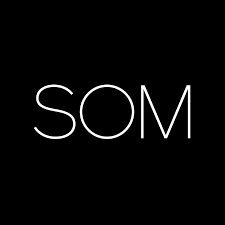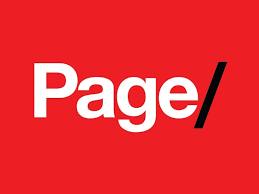
AEC, which stands for architectural engineering and construction, has changed in recent years. On the one hand, the evolution of AI has impacted the AEC design industry. On the other hand, political stability in the US has directly impacted the performance of the companies in the AEC sector. The industry has witnessed a 10%—12% hike in value-added and gross output in the past year.
According to the US Census Bureau, Construction expenditures soared past the US$2 trillion mark, steadily climbing throughout the first half of 2024. Although the industry has witnessed a lack of talent in the past, 2024 has seen employment growth, which crossed 8 million in the second quarter of 2024.
since the built environment, which contains anything from skyscrapers to houses, significantly affects human life, it requires the expertise of qualified engineers and architects to design. Multiple architecture companies in the United States are pushing the limits of design and innovation, and their work is famous worldwide.
Despite the steady growth in the AEC sector, the industry faces some overwhelming challenges. For instance, the high price of raw materials and the constantly rising interest rates pose significant threats to the AEC industry. In addition, architectural firms in the US struggle with weak billings and a slow lending market. However, 2025 can bring a fresh approach to the AEC sector as government investments may lower the interest rates.
Before understanding and exploring the latest industry trends, here is a list of companies developing the benchmark for invention, design, and construction while excitingly reshaping the construction world.
Top Architecture Companies in the United States

HOK
Founded in 1955, HOK has grown into one of the world’s largest and most diversified design practices. The firm is known for creating buildings and environments that marry technology, sustainability, and human experience, from state-of-the-art airports to LEED-certified workplaces and sports arenas.
HOK’s recent work includes the Mercedes-Benz Stadium in Atlanta and the LaGuardia Airport Central Terminal B in New York, both celebrated for their design excellence and energy efficiency. With a strong commitment to regenerative design, the firm’s vision for 2025 focuses on carbon-neutral performance and resilient cities that adapt to climate realities.

Perkins Will
The aec firm has received recognition for its philosophy and its support of removing toxins. Perkins & Will has also finished Petal-Certified Living Building projects and won five COTE Top Ten Awards. Every project is an opportunity for them to make the world a better place.Perkins & Will delivers services in landscape architecture, metropolitan layout, interior design, and branding. It has expanded to employ 2,500 individuals. More than 60 design prizes have been awarded in 2021. Therefore, the awards prove its position as one of the top architectural companies in the US.

Lake Flato
Lake Flato, one of the top AEC companies in the US, has adopted an innovative approach to building since 1984. The Texas-based architectural design company strives to create stimulating environments that improve our knowledge and association with the world and reduce carbon emissions. Numerous honors have resulted from this strategy, including 13 COTE Top Ten Awards. The Betty & Clint Josey Pavilion, the state's first living building, was also created by this group.

SOM (Skidmore, Owings & Merrill)
A name synonymous with modern American architecture, SOM has shaped skylines and cityscapes around the globe since its founding in 1936. The firm combines a research-driven design process with technical precision, evident in iconic projects such as One World Trade Center in New York and Burj Khalifa in Dubai.
SOM continues to redefine high-performance design through its focus on sustainability, digital modeling, and adaptive reuse. In 2025, its U.S. projects, including Chicago’s 400 Lake Shore Drive and San Francisco’s Central SoMa Plan, highlight a renewed vision for equitable, climate-ready urban development.

Payette
Payette, a Boston, Massachusetts-based firm, is well-known across the nation for its data-driven technique for sustainable design. The incorporation of Payette's Building Science Group into the design approach is an innovative process that contributed to the company's 2019 AIA Firm of the Year Award win. Five COTE Top Ten Awards have been given to Payette, and since 2010, 70% of their projects have received LEED certification. Their dedication to research fosters innovation throughout the sector.

ZGF
ZGF has expanded to 6 offices around North America. It is renowned for promoting cutting-edge techniques in sustainable architecture, such as creating the largest net-zero building in California. The architectural design company is now operating in Portland's first certified Living Building and has won numerous COTE Top Ten Awards. Its goal is to understand the relationship between buildings, the environment, and people.

Gensler
Regarding sustainability, Gensler employs an innovative methodology to comprehend the difficulties and circumstances of its clients. At Gensler, the value of their work derives from its positive impact on the human experience. They are a collaborative design firm uniting innovation, research, and creativity to solve complex problems for their clients.
Industry praise has resulted from Gensler's approach. The foremost organization to beat 3 COTE Top 10 Awards was Gensler in 2020. The company has produced Living Building Petal projects, including Etsy's headquarters in NY.
Their work challenges conventional ideas about architecture and the constructed surroundings. They are not just designing buildings but reimagining places and cities that make a difference in people's lives. Their group not only always seems to be in surveys with the most elevated rankings, but they also win multiple prizes for outstanding design work from the industry every year.

HNTB Corporation
For more than a century, HNTB has helped to create infrastructure that best meets the unique demands of its environment. They understand infrastructure life cycles and can solve technical problems with imagination and clarity. They help with far-reaching issues of ongoing operations for construction and design.
Regarded highly for its transportation infrastructure, especially its bridges, is HNTB. They enable clients to achieve their goals and vision.

NBBJ
Founded in 1943, NBBJ is a forward-thinking architecture and planning firm recognized for designing places that enhance human health, creativity, and connection. Its projects span corporate campuses, hospitals, sports venues, and research hubs for global innovators such as Amazon, Microsoft, and the Bill & Melinda Gates Foundation.
NBBJ’s design philosophy blends behavioral science with advanced technology, a practice that has positioned the firm as a leader in evidence-based and wellness-driven design. As the workplace continues to evolve, NBBJ’s 2025 vision focuses on creating flexible, human-centric environments that adapt to how people live and work today.

Corgan
Corgan has quietly become one of the top-ranking architecture firms in the U.S., driven by innovation in aviation, data centers, education, and workplace design. Established in 1938, the firm’s growth has accelerated in recent years, earning it recognition for combining technological sophistication with thoughtful human experiences.
From Amazon Air Hubs to next-generation data campuses and K-12 learning environments, Corgan’s designs anticipate the needs of tomorrow’s infrastructure. Its philosophy centers on research, collaboration, and sustainability, creating smarter spaces that are efficient, inclusive, and ready for the future.

Page Southerland Page, Inc.
Page Southerland Page, legally and commonly known as Page, is a multidisciplinary architecture and engineering firm with more than 125 years of design heritage. Its diverse portfolio includes civic, academic, healthcare, and corporate projects that blend technical rigor with human-scale design.
Recent work, such as the UT Austin Dell Medical School, Embassy of the United States in The Hague, and NASA Johnson Space Center Upgrades, reflects Page’s focus on innovation, performance, and sustainability. The firm’s 2025 mission emphasizes design excellence through collaboration, bringing architects, engineers, and planners together to build spaces that inspire and endure.
How AEC Firms Can Stay Updated with Industry Trends
Keeping abreast of the trends, no matter the industry, gives businesses an edge. The more updated enterprises are, the more they can leverage the trends. The AEC industry is no exception, as it is continually growing. From engineers to designers, staying updated can make them align better, create better designs, and enhance their productivity.
Here are a few important points we can focus on:
Staying Competitive
Every industry thrives on competition. So, the architectural visualization services provider must stay updated to remain relevant in the competitive landscape of the AEC industry—in the USA and around the world.
For example, companies can invest in the latest technologies and tools to ensure they meet design standards. Designing tools are constantly updated. AEC firms can stay updated about their latest launches by following the associated companies' websites or social media declarations.
Additionally, companies should also focus on using new methodologies. Time management is one of the fundamental challenges in the AEC design sector. Architectural design companies in the USA often outsource their design needs as they may need more time to complete the designs. However, instead of outsourcing, these companies can partner with design firms that work as their partner.
Design companies have talented and trained designers. They also have access to tools since they provide design services to multiple businesses. Besides, partnering with these firms enhances the productivity and efficiency of the architect studios as they can meet deadlines while ensuring quality design outcomes.
Being Adaptable
As mentioned above, the AEC industry is changing rapidly. From the latest tools to the new rules and regulations, leading AEC firms must stay open and adapt to these new developments.
For instance, according to The American Institute of Architects (AIA), many tax bills in the US architectural sector will expire in 2025. AIA is vouching for the new laws that will reduce the financial burden on architectural studios on research and development.
Adaptability means keeping up with the industry's changing dynamics and demonstrating proficiency. Engineering and architectural companies must ensure they continuously improve their outcomes through better practice.
Identifying Opportunities
Whether architectural studios or MEP engineering services providers, companies in the AEC industry must identify opportunities to stay relevant in the current scenario. For example, zero-emission building designs are gaining traction in the US. While the US government focuses on lowering carbon emissions, companies also optimize their approach to match the current world's needs.
Zero-emission building designs offer architectural firms an opportunity to generate new ideas. Companies that provide design support to architectural firms are also in sync with changing requirements.
Which AEC Design Trends to Look Out For
Every year brings a fresh perspective with rising trends that merge with the existing ones to drive the growth of an industry. The AEC sector is no different. While some trends may start afresh, some may gain momentum during the coming year.
Here are a few trends that architectural and engineering firms and general contractors should keep an eye out for, especially if they partner with architectural and engineering design providers.
Technological Advancements
An industry can only grow if it embraces technological advancements. Artificial intelligence has already impacted various industries, and the design partners of architectural design companies in the USA are also utilizing AI to plan and execute projects. 2025 will witness a rising use of AI and other technologies, such as digital twin creation and advanced BIM modeling.
Engineering and architectural designs require deep understanding and flawless execution, which is ensured through categorical planning. AI handles complex tasks with more ease and enhances performance.
On the other hand, Machine Learning algorithms can consistently evaluate and enhance intricate industrial processes, resulting in greater efficiency, lower resource usage, and better product quality.
The application of AI and ML in engineering represents a significant transformation. These technologies empower engineers to anticipate failures, streamline processes, and tackle tasks once considered unfeasible.
Although digital twin technology has challenges, the digital representation of a construction project in progress makes a big difference. Real-time data from the Internet of Things devices enables digital models to imitate their physical counterparts' conditions accurately.
MEP engineering services providers often use BIM tools to create distinct 3D models of structures, which are different from digital twins. While digital twins create an overall construction representation, BIM models create a more detailed illustration, including the electrical wiring, lighting family, and other essential components. BIM tools have come a long way since their introduction and are still advancing. Architectural and engineering designers will witness deeper integration of these tools in 2025. BIM tools and digital twins will merge with AI and ML to create a more immersive experience with better data security.
Sustainability and Resilience
Around the globe, nations are investing resources in environmentally friendly urban development to tackle the ecological issues caused by swift urban growth. Authorities and general contractors acknowledge the necessity of sustainable building techniques to lessen the impacts of climate change and lower energy usage. Leading architectural and engineering companies partner with design professionals who use the BIM 360 tool to collaborate on construction projects. Design support providers create 4D (time) and 5D (cost) models of a construction project to show the progress of a building from planning to demolition.
Nonetheless, every area encounters distinct obstacles, such as varying climate conditions, the availability of materials, and regulatory demands, which make AEC software like Autodesk Navisworks, Bentley Synchro, etc., essential. Design tools allow architects and engineers to create energy-efficient buildings by modeling different environmental conditions, ensuring that the structures reduce energy usage.
It assists in choosing eco-friendly building materials by evaluating their environmental effects, longevity, and cost efficiency, essential for minimizing a project's total carbon footprint.
Modular and Prefabricated Construction
Prefabrication involves producing individual components, whereas modular construction involves assembling complete units or systems. Modular construction is building off-site structures, such as apartments and homes made from shipping containers, under controlled conditions. Designers provide material information based on the construction codes of a specific state in the US, which reduces the construction cost by 30%. Since modular constructions take about half the time of conventional construction, companies in the AEC industry are more likely to adopt this approach in 2025 and beyond.
Architectural firms in the US face delays due to material shortages, leading them to opt for prefabrication for its speed and affordability. These companies partner with experts who offer residential, industrial, and commercial prefabrication designs.
Prefabrication often uses precast concrete boards and light-gauge steel structures, which are typically exceptionally sturdy and can withstand environmental impact. Using prefabricated designs significantly lowers build time, which reduces construction expenses. Innovations in manufacturing and focusing on sustainability will encourage AEC companies to invest in prefabricated solutions worldwide.
Positive Political Impact
The recent change in the political landscape in the US will have a positive impact on the AEC industry. A stable political environment will lead to uniform regulations and policies. This predictability will allow AEC firms to confidently plan long-term projects based on consistent building codes, environmental regulations, or labor laws.
In addition, political change will enhance economic confidence and encourage private-sector investment in construction and development projects. When businesses feel secure about the future, they are more likely to invest in new buildings and infrastructure.
US political stability can lead to favorable trade policies, reducing the cost of imported materials and equipment essential for construction projects, lowering overall project costs, and increasing profitability for the AEC firms.
Final Takeaway
The top AEC companies in the US are setting the standard for sustainable design and innovative healthcare, commercial, and cultural landmark projects.
Cities around the country have seen the profound impact of the companies on the list above, each of which has made significant contributions to the work of architecture. Whether building a brand-new home, renovating an old one, or creating a cutting-edge commercial design, these architecture companies have the know-how, creativity, and knowledge to make your dream a reality.
However, great companies also require support. Small and medium AEC companies striving to reach the top can outsource their design services. Uppteam is one of the most preferred remote architectural and engineering design support providersin the US.
Our architects help create aesthetically pleasing environments while maintaining their usefulness. We also focus on developing inventive, sustainable, and practical spaces that satisfy our clients' needs. Our personalized design solutions cater to individual client needs.
Additionally, our clients can be sure that their projects will be in capable hands with the assistance of one of the top AEC companies in the US.
Organizations that work with us can focus on their primary business functions while we handle their architectural design tasks.


















